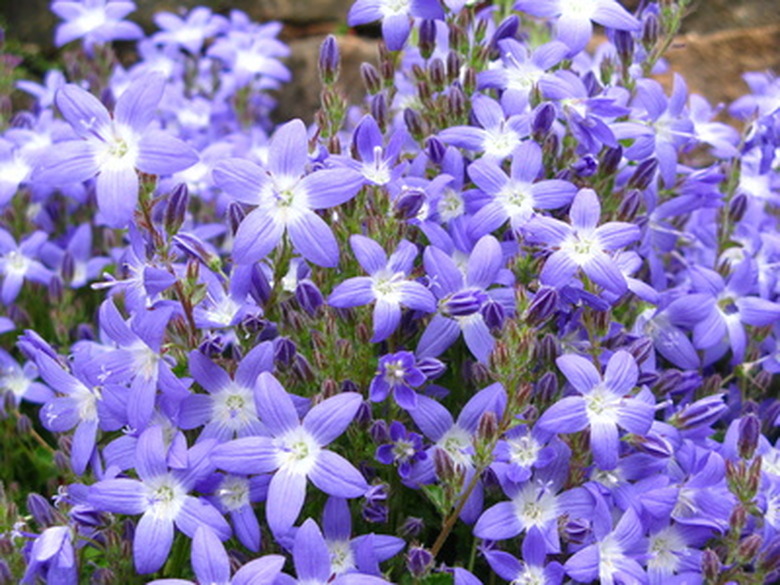Problems With Vinca
Vinca plants, also known as periwinkle and myrtle, are known for their multicolored flowers and glossy foliage. They are hardy plants that grow well with little care or attention, even in dry, hot areas. Vinca is usually used for ground cover edging, or as a border plant. While easy to grow, even for first-time gardeners, vinca can be prone to certain problems.
Leaf Spot
If black or brown spots appear on the leaves and shoots of your vinca plant, leaf spot is the likely culprit. Alternaria leaf spot causes light and dark rings of dead tissue with a bull's eye appearance. The leaves turn yellow and defoliation, or leaf drop, begins at the base of the shoot. All but the newest leaves are lost. To put an end to this pesky fungus, apply a fungicide once every week to two weeks after you notice spots on the lower leaves. The fungi that causes leaf spot thrives in the cool, moist weather of the early growing season, so this is seldom a problem once the warm, dry weather arrives. Leaf spot can make your vinca to look unattractive but it rarely kills the plant.
- Vinca plants, also known as periwinkle and myrtle, are known for their multicolored flowers and glossy foliage.
- Leaf spot can make your vinca to look unattractive but it rarely kills the plant.
Phytophthora Blight
Phytophthora blight is caused by phytophthora parasitica. It is a common disease of vinca and it can be particularly destructive to the plant. The early flagging of a single shoot and wilting are early symptoms of this disease, along with watery lesions at the base of the wilted shoots and sunken, reddish brown cankers along the entire main stem of the plant. If phytophthora becomes an infestation, root rot and plant death can occur within one to two weeks of the onset of symptoms. The key to preventing this ailment is to keep the area near the vinca free of old plant debris, and try to keep the foliage from becoming wet. Two to three treatments of a fungicide may be necessary. Always follow label directions when applying any fungicide.
- Phytophthora blight is caused by phytophthora parasitica.
- The key to preventing this ailment is to keep the area near the vinca free of old plant debris, and try to keep the foliage from becoming wet.
Black Root Rot
Caused by the soil-borne fungus, Thielaviopsis basicola, this disease causes brown or black bands and bullet-shaped spores to form on the roots of the vinca, resulting in yellow foliage and poor growth. Prevent this problem by not under-watering or over-watering your plant. Further, be sure to clean and disinfect all work surfaces and tools used to cultivate vinca.
